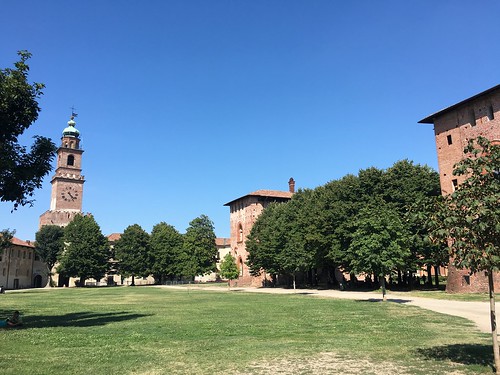Accination.AcknowledgmentsWe thank the participants who volunteered for the study, nurses from the Endoscopy Unit for blood extractions; Beatriz Abrante for her  work in coordinating the delivery of samples for measurement of HA and Fundacion para la Investigacion Biomedica Rafael y Clavijo for editorial ???support. The VAPI questionnaire is protected by copyright with all rights reserved by Sanofi Pasteur and was used with permission.Author ContributionsConceived and designed the experiments: MHG EQ. Performed the experiments: YGM AZGG MC CC. Analyzed the data: AJ MHG EQ. Contributed reagents/materials/analysis tools: PdM TP MHP AT. Wrote the paper: MHG.Influenza A Vaccine in Chronic Hepatitis C
work in coordinating the delivery of samples for measurement of HA and Fundacion para la Investigacion Biomedica Rafael y Clavijo for editorial ???support. The VAPI questionnaire is protected by copyright with all rights reserved by Sanofi Pasteur and was used with permission.Author ContributionsConceived and designed the experiments: MHG EQ. Performed the experiments: YGM AZGG MC CC. Analyzed the data: AJ MHG EQ. Contributed reagents/materials/analysis tools: PdM TP MHP AT. Wrote the paper: MHG.Influenza A Vaccine in Chronic Hepatitis C
Herbivory and neighboring plant competition for resources are two of the most important biotic forces affecting plant distributions and fitness [1]. Competition, resource availability, and herbivory can affect levels of defensive compounds in plants, since chemical defense is a plastic response. Production of secondary metabolites is often associated with reduced fitness in terms of lower growth and reproduction [2?0]. This trade-off between investment in plant defense versus growth and reproduction is termed an allocation cost [10,11]. However, comparisons between defense and growth or reproduction may be insufficient to quantify the costs of defense because natural selection may strongly favor reductions in trade-offs between such important activities as growth, reproduction, and defense. Physiological parameters can be more useful than growth rates for quantifying the cost of plant defenses [12?6,8,10] (but see [17]). Physiological costs, such asreductions in photosynthetic enzymes or the biosynthesis of other proteins required for primary metabolism are said to arise from `metabolic competition’ between defense production and primary metabolic functions [18]. Further examination of physiological costs is important 15755315 for determining the mechanisms underlying allocation costs and for understanding interactions between pathways leading to primary and secondary metabolites. In addition, despite the notable contributions of induced defense literature to understanding costs of chemical defense, it may be SMER 28 price particularly interesting to study costs in constitutive defenses to understand the baseline value plants place on tissue retention. In terms of physiological costs, photosynthesis is among the most important variables to quantify as it forms the foundation of a plant’s carbon budget. Studies combining measures of plant defense and photosynthesis can also help clarify two prominent mass-balance based Lixisenatide hypotheses of secondary metabolite production. The carbon-nutrient balance hypothesis (CNBH) [19]Variation in Costs of Terpenoids and Phenolicsand the growth-differentiation balance hypothesis (GDBH) [11] were formulated to address differences in defense concentrations among individuals within a species; both hypotheses stem from the assumption that an imbalance in nutrients and carbon will allow plants to invest excess resources in defense as growth becomes limited before photosynthesis. Plants that produce nitrogencontaining defensive compounds (N-based defenses) are expected to increase their production of defenses when available nitrogen is more abundant than carbon; likewise, plants capable of synthesizing carbon-based secondary metabolites (C-based defenses) should increase production when fixed carbon exceeds requirements for growth [11,19]. Nitrog.Accination.AcknowledgmentsWe thank the participants who volunteered for the study, nurses from the Endoscopy Unit for blood extractions; Beatriz Abrante for her work in coordinating the delivery of samples for measurement of HA and Fundacion para la Investigacion Biomedica Rafael y Clavijo for editorial ???support. The VAPI questionnaire is protected by copyright with all rights reserved by Sanofi Pasteur and was used with permission.Author ContributionsConceived and designed the experiments: MHG EQ. Performed the experiments: YGM AZGG MC CC. Analyzed the data: AJ MHG EQ. Contributed reagents/materials/analysis tools: PdM TP MHP AT. Wrote the paper: MHG.Influenza A Vaccine in Chronic Hepatitis C
Herbivory and neighboring plant competition for resources are two of the most important biotic forces affecting plant distributions and fitness [1]. Competition, resource availability, and herbivory can affect levels of defensive compounds in plants, since chemical defense is a plastic response. Production of secondary metabolites is often associated with reduced fitness in terms of lower growth and reproduction [2?0]. This trade-off between investment in plant defense versus growth and reproduction is termed an allocation cost [10,11]. However, comparisons between defense and growth or reproduction may be insufficient to quantify the costs of defense because natural selection may strongly favor reductions in trade-offs between such important activities as growth, reproduction, and defense. Physiological parameters can be more useful than growth rates for quantifying the cost of plant defenses [12?6,8,10] (but see [17]). Physiological costs, such asreductions in photosynthetic enzymes or the biosynthesis  of other proteins required for primary metabolism are said to arise from `metabolic competition’ between defense production and primary metabolic functions [18]. Further examination of physiological costs is important 15755315 for determining the mechanisms underlying allocation costs and for understanding interactions between pathways leading to primary and secondary metabolites. In addition, despite the notable contributions of induced defense literature to understanding costs of chemical defense, it may be particularly interesting to study costs in constitutive defenses to understand the baseline value plants place on tissue retention. In terms of physiological costs, photosynthesis is among the most important variables to quantify as it forms the foundation of a plant’s carbon budget. Studies combining measures of plant defense and photosynthesis can also help clarify two prominent mass-balance based hypotheses of secondary metabolite production. The carbon-nutrient balance hypothesis (CNBH) [19]Variation in Costs of Terpenoids and Phenolicsand the growth-differentiation balance hypothesis (GDBH) [11] were formulated to address differences in defense concentrations among individuals within a species; both hypotheses stem from the assumption that an imbalance in nutrients and carbon will allow plants to invest excess resources in defense as growth becomes limited before photosynthesis. Plants that produce nitrogencontaining defensive compounds (N-based defenses) are expected to increase their production of defenses when available nitrogen is more abundant than carbon; likewise, plants capable of synthesizing carbon-based secondary metabolites (C-based defenses) should increase production when fixed carbon exceeds requirements for growth [11,19]. Nitrog.
of other proteins required for primary metabolism are said to arise from `metabolic competition’ between defense production and primary metabolic functions [18]. Further examination of physiological costs is important 15755315 for determining the mechanisms underlying allocation costs and for understanding interactions between pathways leading to primary and secondary metabolites. In addition, despite the notable contributions of induced defense literature to understanding costs of chemical defense, it may be particularly interesting to study costs in constitutive defenses to understand the baseline value plants place on tissue retention. In terms of physiological costs, photosynthesis is among the most important variables to quantify as it forms the foundation of a plant’s carbon budget. Studies combining measures of plant defense and photosynthesis can also help clarify two prominent mass-balance based hypotheses of secondary metabolite production. The carbon-nutrient balance hypothesis (CNBH) [19]Variation in Costs of Terpenoids and Phenolicsand the growth-differentiation balance hypothesis (GDBH) [11] were formulated to address differences in defense concentrations among individuals within a species; both hypotheses stem from the assumption that an imbalance in nutrients and carbon will allow plants to invest excess resources in defense as growth becomes limited before photosynthesis. Plants that produce nitrogencontaining defensive compounds (N-based defenses) are expected to increase their production of defenses when available nitrogen is more abundant than carbon; likewise, plants capable of synthesizing carbon-based secondary metabolites (C-based defenses) should increase production when fixed carbon exceeds requirements for growth [11,19]. Nitrog.
